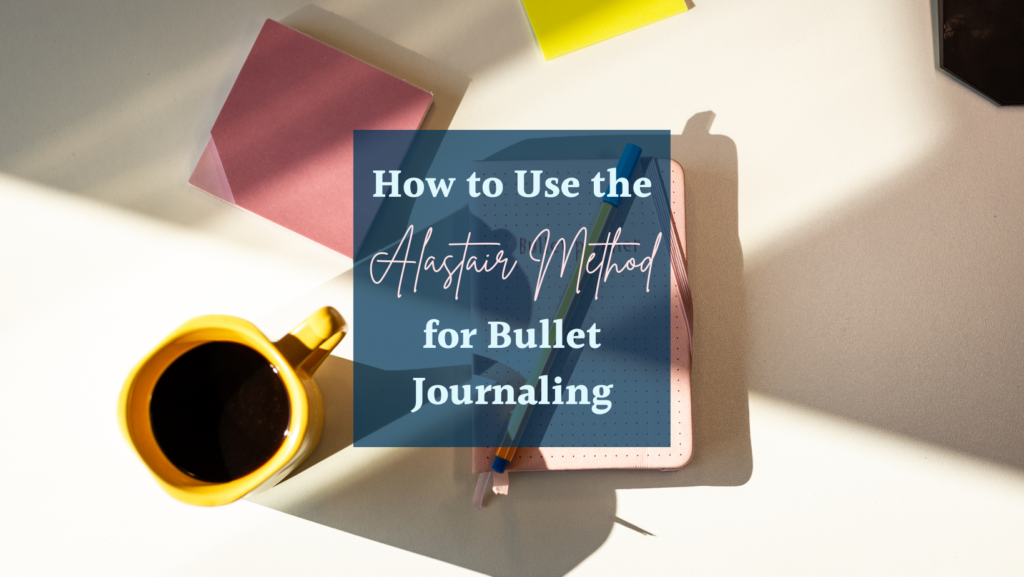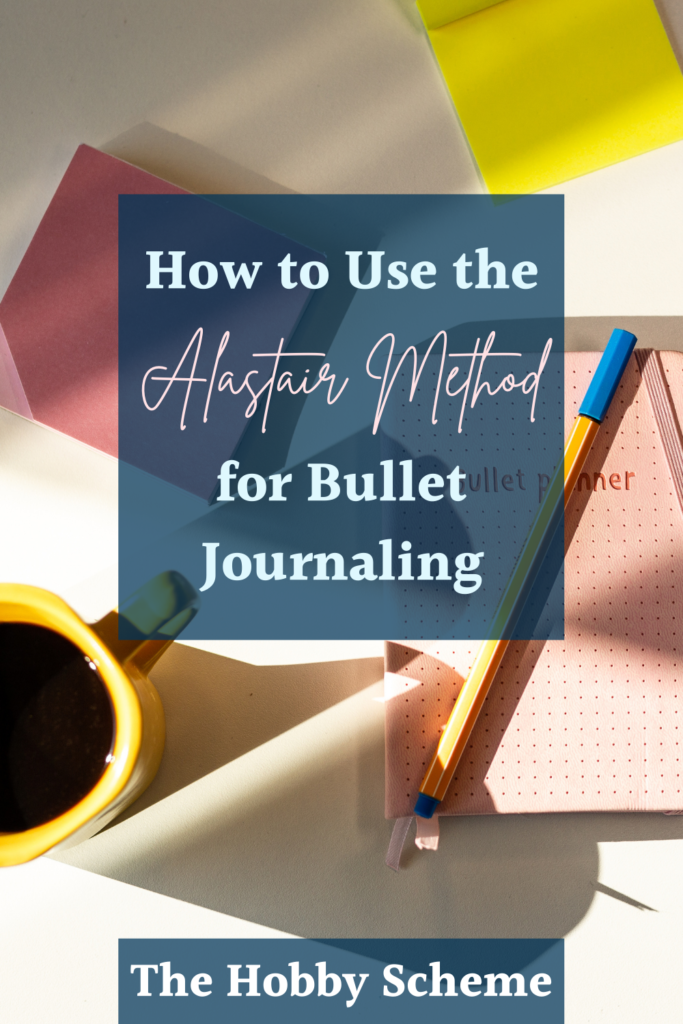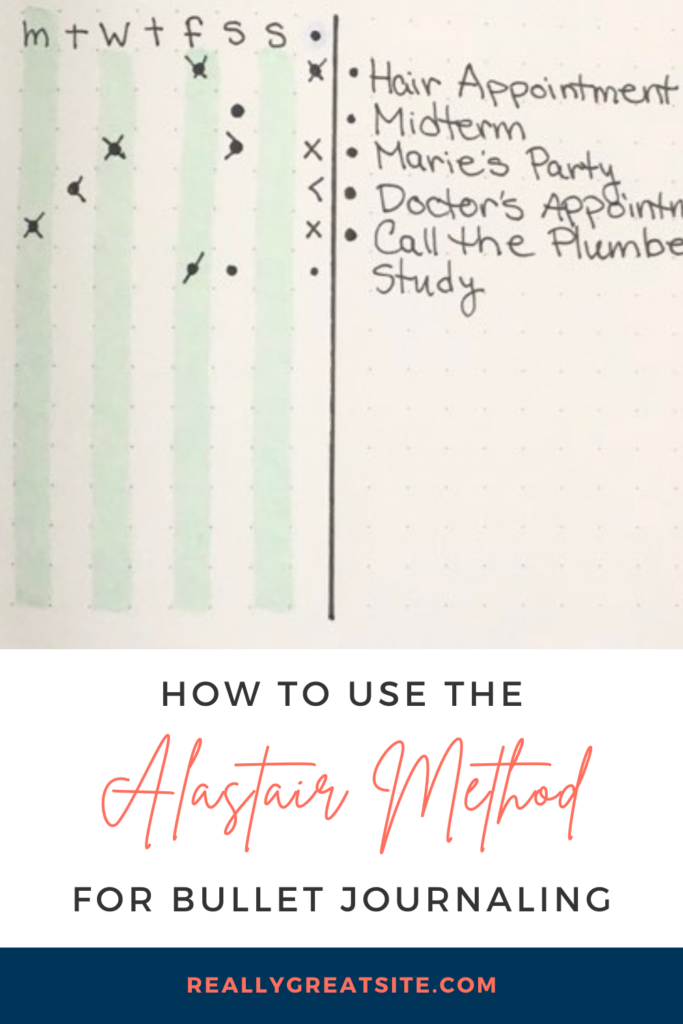Most bullet journalers know about Ryder Carroll and his original Bullet Journal Method. I mean, he is the person who created the whole bullet journal system, to begin with. However, his method isn’t the only one out there! After trying Carroll’s method, Alastair Johnston decided to create his own. The Alastair Method isn’t known far and wide but it is out there. It is simple and great for people who have trouble organizing every task into multiple lists. You only need one list! How great is that?!
Bullet Journal Method Background
Ryder Carroll created the original bullet journal method with rapid logging and bullets to make it easy for him to organize his schedule and his tasks. However, the original method is catered to him and how his brain works. His system might not be as effective for other people. So those people started coming up with their own methods.
Alastair Johnston was having trouble using Ryder Carroll’s version of the future log. Lucky for him, he came up with a new system that worked better for how he organizes his thoughts.
Before we get too far into it, let’s do a quick review of Carroll’s Bullet Journal Method!
Carroll’s method involved using specific symbols in a list to better organize your to-do lists. This form of writing is called Rapid Logging (a rapid communication using bullets and short-form sentences).
You have dots for tasks, circles for events, and dashes for notes. Basically, when you are writing down your to-do lists, you can organize them based on their purpose instead of mashing them all together.
Once you have them written down, you can x them out (to show you completed them), migrate them, and cancel them (with a line through the task). It’s pretty simple! Just a fancy to-do list.
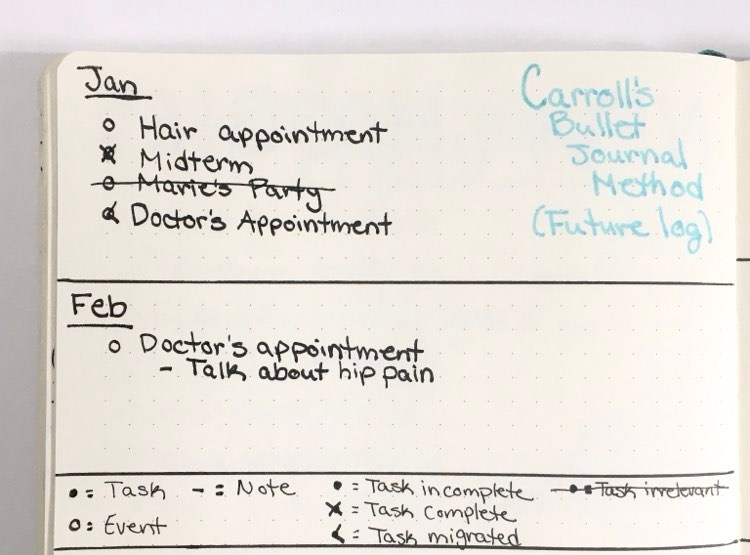
(You can learn more here!)
This method obviously doesn’t work for everyone and that’s where the Alastair Method comes in!
Alastair Method: Future Log
Alastair needed a different system for his future log, so he created his own.
In this method, you have columns for each month in the year (or however long you plan on using that journal). Next to that, you have one last row for all of your tasks and events. You simply have to add your events to the column and mark which month by using a dot in the rows beside it.
You x out the events (on the dot) when you have completed the event. So easy!
It does get a little more complicated when you have to move events around. You can create an arrow over the dot (> or <) to signify that it has been moved backwards or forwards, respectively. Then you add the dot to whichever month you are changing it to.
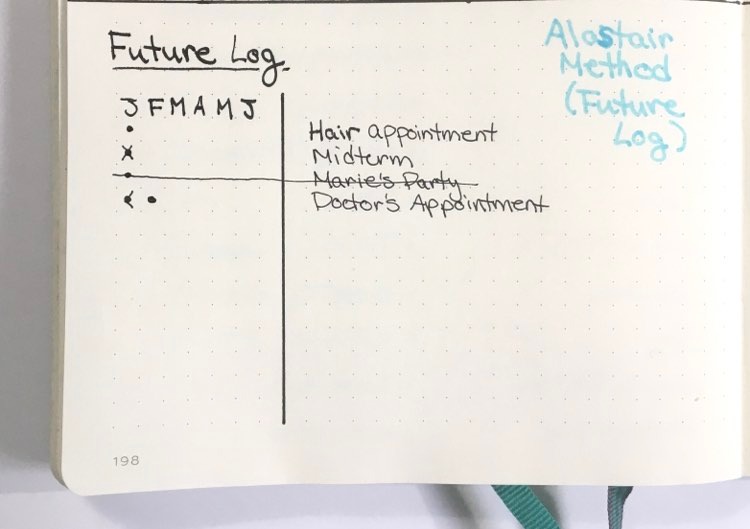
(You can read more about his future log method here!)
Alastair Method: To-Do List
Alastair Johnston didn’t stop at future logs! He decided to create his own version of a to-do list too. Yet, this one is a little more unconventional.
Alastair kept the same form from his bullet journal method: columns with a section for all his tasks. However, the first columns are no longer for the months of the year but instead for the context of the task. It is inspired by Getting Things Done by David Allen.
Johnston organizes his tasks into contexts like calendar, email, phone, @ home, etc. (And yes, before you ask, you can put one task in multiple contexts.) There is even a context for thinking, which he designates as a time for concentration and no distractions.
Let’s try an example! We’ll say you have to call the plumber to fix your water heater. You would add a dot in the columns for phone and @ home. Easy!
He suggests that you have a separate list for projects because they have multiple steps to them, but he does keep a column for projects just as a reminder that they need to get done.
When you complete a task, you x out the dot under the context of the task.
Alastair Johnston did think ahead. He added a “waiting for” column in case you did a task but you are now waiting on someone else to answer you back or to complete the task. You simply cross out the task under the original context and add the dot to the new column.
(You can learn more about Johnston’s To-Do List here!)
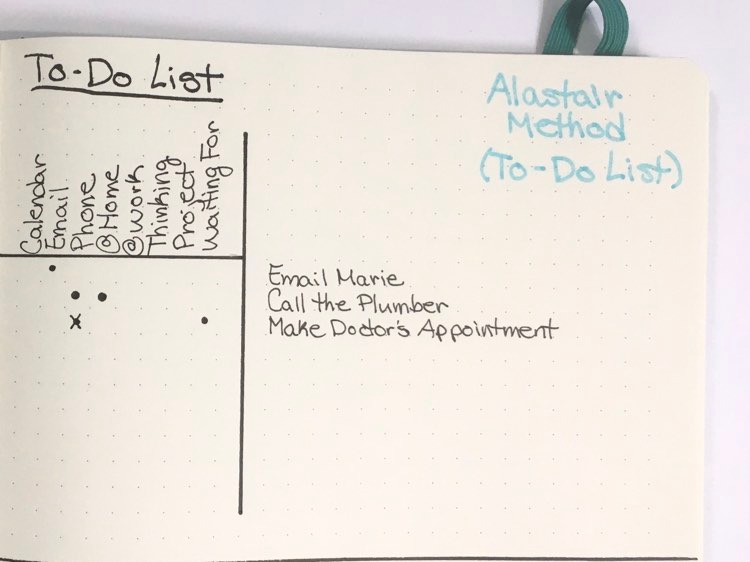
Alastair Method: Adaptations – The Rolling Week
Last but not least, we have an adaptation of the Alastair Method called the Rolling Week.
The rolling week is basically the same concept from the future log but created for a week instead of a year.
At the top of the columns, you write down the days of the week (or the letters). Next to that, you can list all the tasks you have to do that week.
Like the future log, you simply add a dot to the day you want to complete the task. You x it out when you complete it.
However, there is one new column this time. At the end of the week, the last column should tell you which tasks you have completed, which you haven’t started, and which you migrated to the next week. Basically, the last column is a summary.
There are a few symbols you need to know. A dot is an incomplete task and an x is a completed task, but you know those already.
You can still use < or > to show that you moved a task to a different date (or a different week if it’s in the last column).
Last but not least, we have the semi-complete symbol, which is just a diagonal line over the original dot. Let’s say you have to study this week but you don’t get it all done in one day. You can add this symbol to show that it isn’t complete and add another dot for the other days you plan to study.
I hope the picture explains it better than I did!
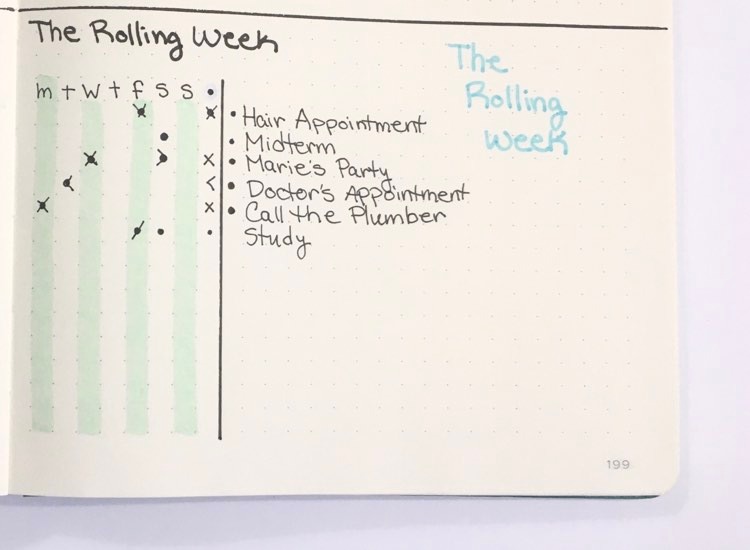
If you need a little more instructions on how this list works, here are two great videos by Boho Berry and Plant Based Bride.
In All…
The Alastair Method is just as great as Carroll’s original Bullet Journal Method. It simply depends on how your brain works and which system works better to keep you organized and on track with your tasks. You don’t have to dedicate yourself to a completely new method right away. Try both methods and see which one works for you. You never know! You might end up creating your own method one day. As long as it works for you, that’s all that matters!
Related Articles
- Bullet Journaling for ADHD: Improving Your Focus and Priorities
- What Is the Difference Between Journaling and Bullet Journaling?

